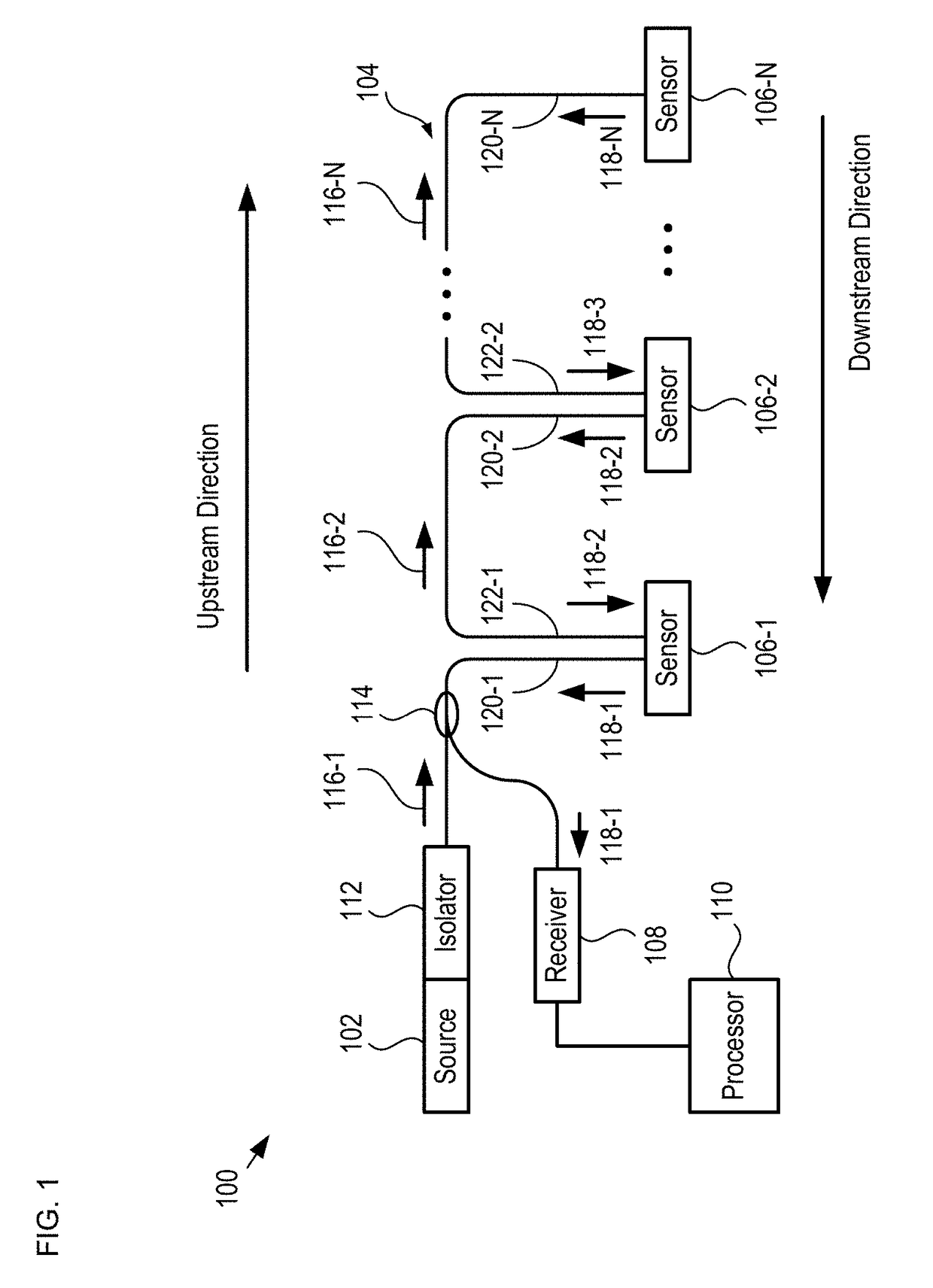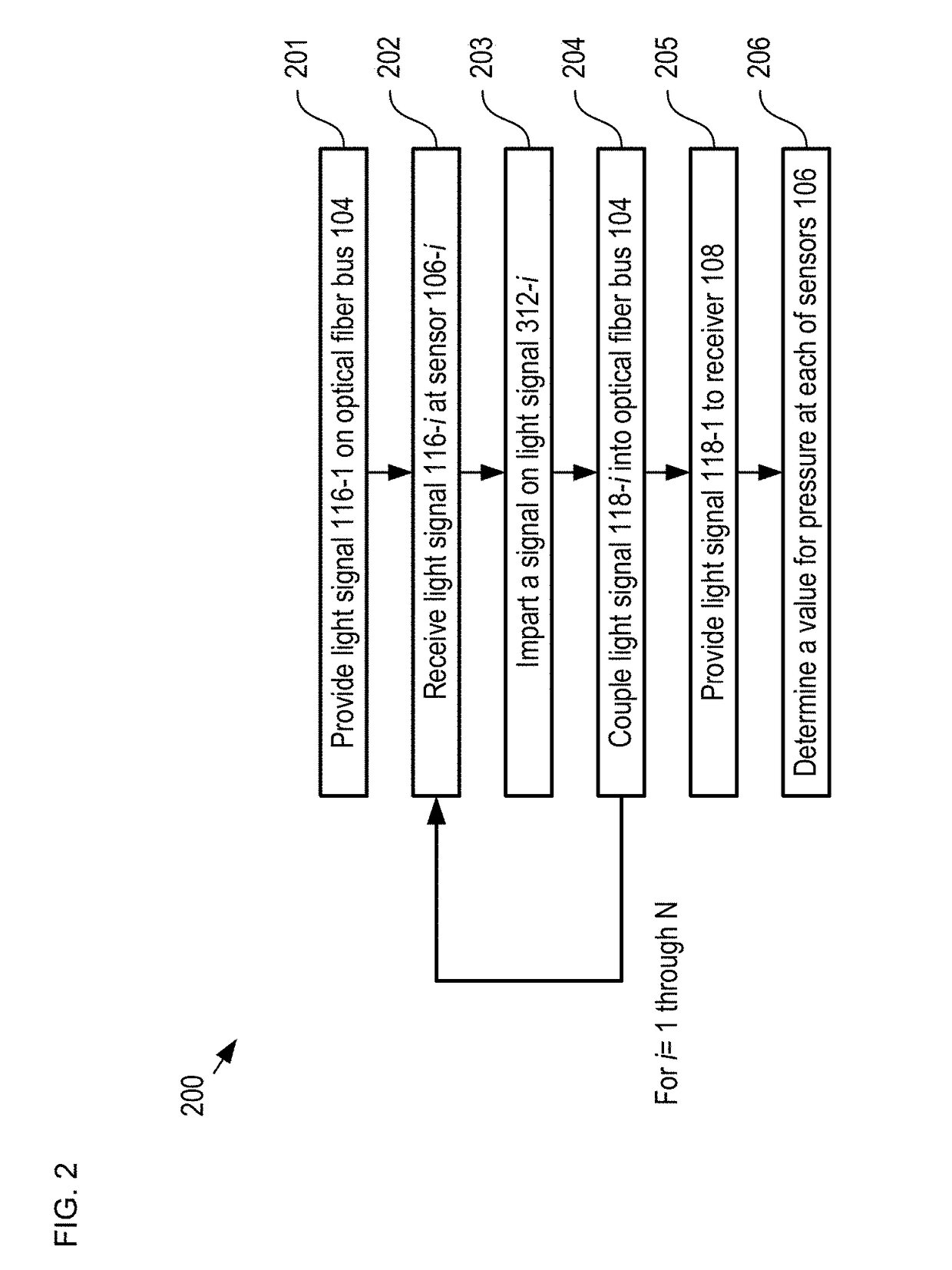Multiplexed Fiber-Coupled Fabry-Perot Sensors and Method Therefor
a fiber-coupled, multi-fiber technology, applied in the field of sensors, can solve the problems of limited deployment of fp sensors in many applications, poor dynamic range of typical fbg sensors, and inability to meet the needs of fp sensors,
- Summary
- Abstract
- Description
- Claims
- Application Information
AI Technical Summary
Benefits of technology
Problems solved by technology
Method used
Image
Examples
Embodiment Construction
[0023]FIG. 1 depicts a schematic drawing of a sensor network in accordance with an illustrative embodiment of the present invention. Network 100 is a distributed pressure-sensor network operative for providing a spatial map of pressure based on measurements made at N locations. In some embodiments, network 100 is operative for monitoring a plurality of measurands at one or more locations. In some embodiments, network 100 is operative for monitoring one or more measurands at one or more locations. For the purposes of this Specification, including the appended claims, a “measurand” is defined as the quantity measured by a sensor.
[0024]Network 100 includes source 102, fiber bus 104, sensors 106-1 through 106-N, receiver 108, and processor 110, interrelated as shown. It will be clear to one skilled in the art, after reading this Specification, how to specify, make, and use alternative embodiments wherein a network includes any practical number of sensors.
[0025]FIG. 2 depicts operations ...
PUM
| Property | Measurement | Unit |
|---|---|---|
| mirror reflectance | aaaaa | aaaaa |
| cavity length | aaaaa | aaaaa |
| wavelength | aaaaa | aaaaa |
Abstract
Description
Claims
Application Information
 Login to View More
Login to View More - R&D
- Intellectual Property
- Life Sciences
- Materials
- Tech Scout
- Unparalleled Data Quality
- Higher Quality Content
- 60% Fewer Hallucinations
Browse by: Latest US Patents, China's latest patents, Technical Efficacy Thesaurus, Application Domain, Technology Topic, Popular Technical Reports.
© 2025 PatSnap. All rights reserved.Legal|Privacy policy|Modern Slavery Act Transparency Statement|Sitemap|About US| Contact US: help@patsnap.com



